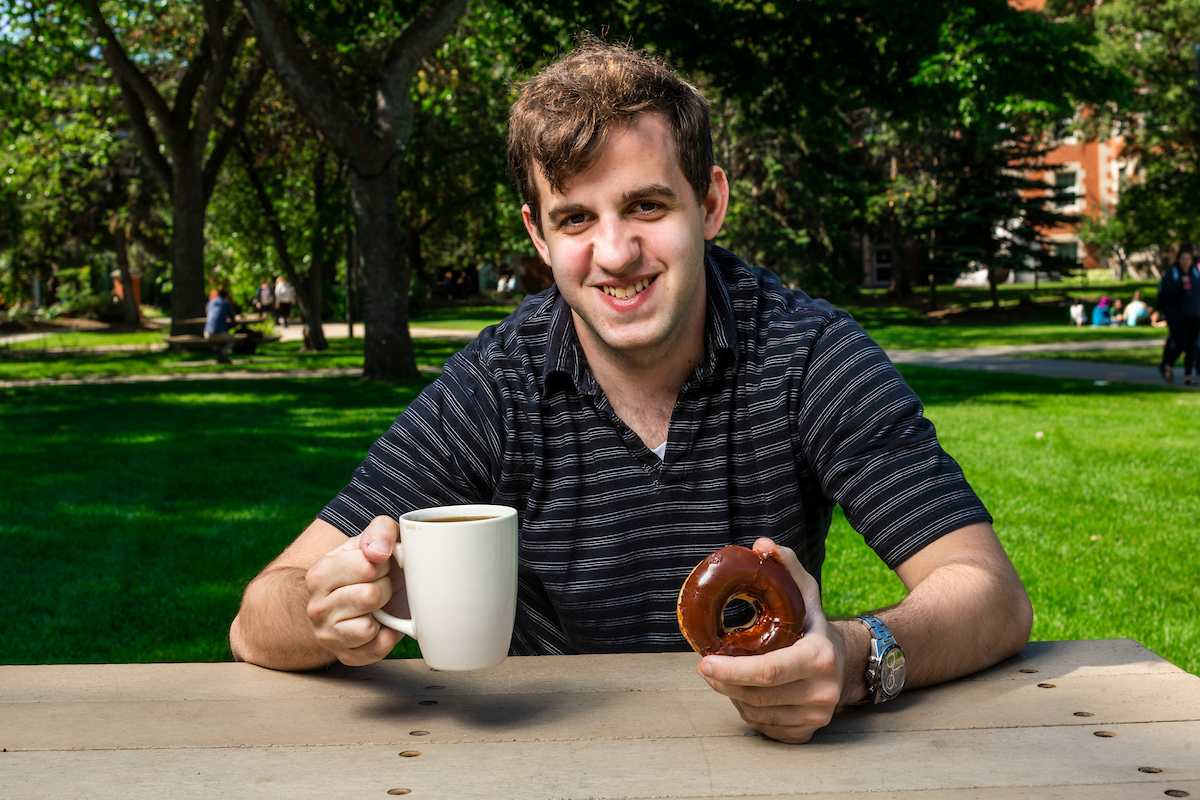
"To a topologist, a coffee cup and a doughnut are the same object since a coffee cup can be deformed into the shape of a donut." Eric Primozic is the latest recipient of the Max Wyman Assistant Professorship in Pure Mathematics in the Department of Mathematical and Statistical Sciences. Photo credit: John Ulan
Eric Primozic is the latest recipient of the Max Wyman Assistant Professorship in Pure Mathematics in the Department of Mathematical and Statistical Sciences. The Max Wyman Assistant Professorship is named after Max Wyman, the first alumnus of the University of Alberta to serve as its president. Wyman was president of UAlberta from 1969 to 1974
Primozic joins the University of Alberta campus community from the University of California, Los Angeles (UCLA), where he recently completed his PhD studies in algebraic geometry and algebraic topology.
Join us in welcoming Eric Primozic.
What is pure math?
Pure math is all about studying math for math's sake. Eventually, results from pure math can end up being very important for physical applications though. As an example, people have studied number theory for more than 2,000 years because they find it to be very interesting. Objects such as prime numbers exist, and it is natural to ask what patterns they satisfy. With the advent of computers in the 20th century, number theory now has real world applications such as cryptography.
What brought you to the University of Alberta?
I came to the University of Alberta to work with faculty whose research overlaps with mine, including Professor Vladimir Chernousov, Associate Professor Stefan Gille, Professor NIkita Karpenko, and Professor James Lewis.
Tell us about your research program.
I'm mainly interested in algebraic geometry and algebraic topology. Classically, algebraic geometry is concerned with the study of the geometric properties of objects defined by polynomial equations. Well-known examples of such geometric objects include conic sections and quadric surfaces. In algebraic geometry, you can convert a geometric object into algebra and then study the algebraic properties of this object. Results in algebraic geometry have been very important in solving problems from other fields such as number theory.
Topology is also related to the study of geometry but with some restrictions. In topology, one studies the geometric properties of an object that are unaffected by continuous deformations. To a topologist, a coffee cup and a doughnut are the same object since a coffee cup can be deformed into the shape of a donut. In algebraic topology, algebraic properties, such as cohomology, of geometric objects are studied. Cohomology measures, in some sense, the presence of holes in a geometric object. The introduction of cohomology to topology led to the resolution of several important problems.
Tell us about your teaching.
I will be teaching a class on group theory. Teaching is important for preparing the next generation of mathematicians, scientists, and engineers. It is also gives me an opportunity to revisit topics I found interesting as a student.
One of my fondest memories from the past few years is of me doing problem after problem on group theory from an abstract algebra textbook. As groups can be complicated objects, I found it fascinating that major structural properties of a group can sometimes be deduced from properties that seem insignificant at first. For example, just knowing how big a group can give a lot of information.